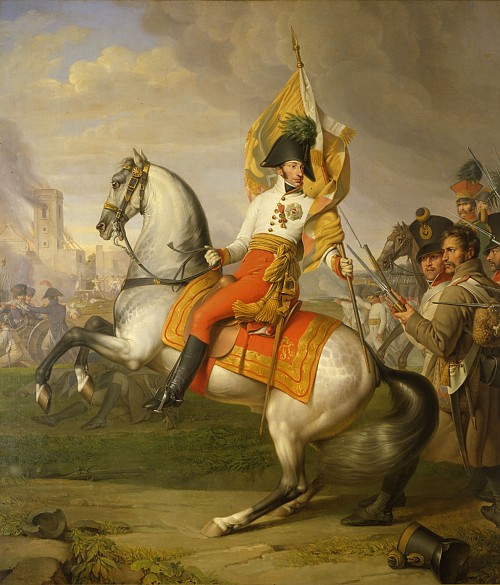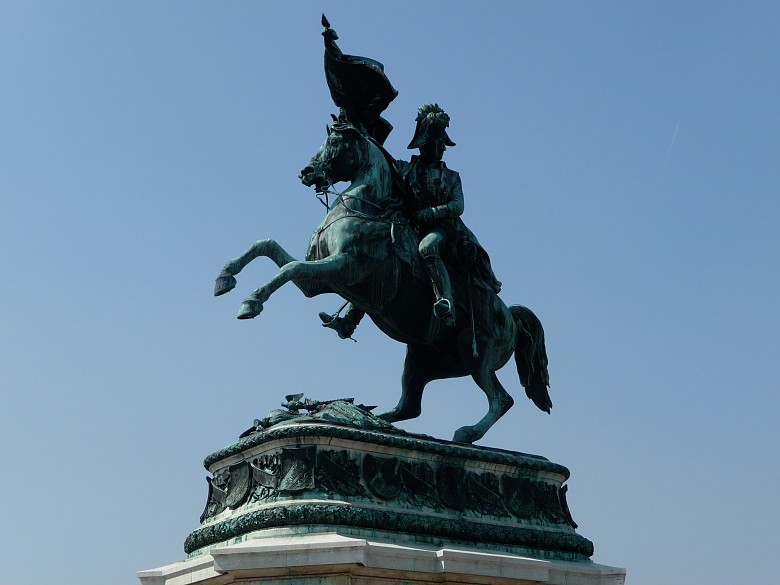Archduke Karl of Austria and Archduchess Camilla of Austria, a couple whose union was once hailed as a beacon of hope for the preservation of imperial traditions, have faced significant challenges in their relationship. Despite their shared heritage and commitment to preserving the legacy of the Habsburg dynasty, the couple has struggled to maintain a united front in the face of adversity.
Their story is a poignant reminder of the complexities and challenges that can arise when individuals from prominent families navigate the intricacies of royal and imperial life. As they continue to navigate the complexities of their relationship, it is essential to examine the factors that have contributed to their struggles and the implications for the future of the Habsburg dynasty. By exploring the intricacies of their union, we can gain a deeper understanding of the challenges faced by those who are part of the imperial elite and the role they play in shaping the course of history.
what were the main reasons behind the failed imperial union between Archduke Karl and Archduchess Camilla

Key Factors Contributing to the Failure of the Union:
- Historical Context of Royal Intermarriage: Royal intermarriage has long been a practice aimed at securing alliances and maintaining peace between nations. However, this practice can also lead to conflicts and power struggles within the royal family. In the case of Archduke Karl and Archduchess Camilla, their union was part of a larger effort to preserve the Habsburg dynasty, but it ultimately failed due to the complexities and tensions inherent in royal intermarriage.
- Pressure to Maintain Imperial Traditions: The couple faced significant pressure to uphold the traditions and legacy of the Habsburg dynasty. This included maintaining the imperial status quo and ensuring the continuation of the dynasty through their offspring. The weight of these responsibilities can be overwhelming, and the couple’s inability to navigate these pressures effectively contributed to the failure of their union.
- Personal and Family Dynamics: The couple’s personal and family dynamics also played a significant role in the failure of their union. Archduke Karl and Archduchess Camilla came from different backgrounds and had different expectations for their relationship. These differences, combined with the pressures of royal life, ultimately led to the breakdown of their union.
Conclusion:
The failed union between Archduke Karl and Archduchess Camilla serves as a reminder of the challenges and complexities that can arise when individuals from prominent families navigate the intricacies of royal and imperial life. The couple’s inability to overcome the pressures of royal intermarriage, maintain imperial traditions, and navigate personal and family dynamics ultimately led to the failure of their union.
what were the key differences in political views between Archduke Karl and Archduchess Camilla

Archduke Karl:
- Family Background: Archduke Karl was the son of Archduke Otto von Habsburg, who was a prominent figure in the European Parliament and a strong advocate for European integration and the reunification of Europe. Archduke Otto was also a fierce opponent of Nazism and communism.
- Political Views: Archduke Karl likely inherited his father’s commitment to European integration and the preservation of imperial traditions. He has been involved in various political and cultural initiatives, including serving as the President of the European People’s Party (EPP) and advocating for the preservation of European cultural heritage.
Archduchess Camilla:
- Family Background: Archduchess Camilla is a member of the House of Habsburg-Lothringen, a prominent European royal family with a rich history of involvement in politics and diplomacy. Her family has been known for their cultural and philanthropic efforts, particularly in the fields of education and social welfare.
- Political Views: Archduchess Camilla’s political views are not explicitly mentioned in the provided sources. However, given her family’s historical involvement in politics and diplomacy, it is likely that she shares their commitment to preserving European cultural heritage and promoting social welfare.
Key Differences:
- Focus: Archduke Karl’s political views seem to focus more on European integration and the preservation of imperial traditions, whereas Archduchess Camilla’s views may be more centered on social welfare and cultural preservation.
- Involvement: Archduke Karl has been actively involved in various political and cultural initiatives, whereas Archduchess Camilla’s political involvement is not explicitly mentioned in the provided sources.
These differences in focus and involvement likely contributed to the challenges faced by the couple in their relationship, particularly given the historical context of royal intermarriage and the pressures of maintaining imperial traditions.
how did Archduke Karl’s political views shape his public image
Key Aspects of Archduke Karl’s Political Views:
- European Integration: Archduke Karl has been a long-time advocate for European integration, particularly through his involvement with the European People’s Party (EPP). He has consistently emphasized the importance of preserving European cultural heritage and promoting unity among European nations.
- Preservation of Imperial Traditions: As a member of the Habsburg dynasty, Archduke Karl has been deeply committed to preserving the traditions and legacy of the imperial family. This includes maintaining the imperial status quo and ensuring the continuation of the dynasty through his offspring.
- Cultural Preservation: Archduke Karl has been actively involved in various cultural initiatives, including the preservation of European cultural heritage. He has emphasized the importance of culture in binding European societies together and has worked to promote cultural exchange and understanding across the continent.
Impact on Public Image:
Archduke Karl’s political views have contributed significantly to his public image as a champion of European unity and cultural heritage. His commitment to these causes has earned him respect and admiration from many Europeans who share his vision for a united and culturally rich continent.
 |
|
Archduke Karl and Archduchess Camilla of Austria, 2019.
Photo (c) IMAGO / Viennareport.
|
In the late 1980s or early 1990s, Archduke Karl of Austria (b.1961) was in a relationship with his distant cousin Camilla Habsburg-Lothringen (b.1962). Karl was the eldest son and heir of Archduke Otto of Austria, Crown Prince of Hungary, and his wife Archduchess Regina (née Princess of Saxe-Meiningen). Camilla was the only child of Maximilian Habsburg-Lothringen, called Prince of Florence, and his wife Doris Williams. According to reports, Archduke Karl wished to marry Camilla. However, she was not of equal rank and possessed no noble title, despite her illustrious Habsburg ancestry. Although the timeline of subsequent events is not definitely established, Archduke Otto of Austria upgraded Habsburg morganauts to the rank of Count and Countess of Habsburg around 1990. It is believed that Otto took this step so that Karl could wed Camilla, who would now qualify as a noble spouse (if not totally “equal”). Alas, Karl and Camilla did not become engaged and they ended their relationship. In 1993, Archduke Karl married Baroness Francesca von Thyssen-Bornemisza; the couple are now divorced. Countess Camilla never married. In 2013, Archduke Karl of Austria sent a letter to members of the Habsburg family notifying them that they were now Archdukes and Archduchesses of Austria. This upgrade likely only applied to those members of the family who had already been upgraded to become Counts and Countesses of Habsburg in 1990. As a result of this letter, Countess Camilla of Habsburg (née Habsburg-Lothringen), Archduke Karl’s onetime love, became Archduchess Camilla of Austria. Although there are no photographs of Karl and Camilla during their long-ago courtship, the couple did meet in February 2019 at Vienna for the International Conference on The Future of Europe hosted by the Pan-European Movement.
 |
| Archduke Karl of Austria and Archduchess Camilla of Austria. Photo (c) IMAGO / Viennareport. |
To learn more about Archduke Karl of Austria, one may visit his website: Karl von Habsburg.
To learn more about Archduchess Camilla of Austria, one may read this article: Interview with Camilla Habsburg-Lothringen: Culture as a binding factor in our society
what were the key events that led to the Croatian war
Key Factors Contributing to the Failure of the Union:
- Historical Context of Royal Intermarriage: Royal intermarriage has long been a practice aimed at securing alliances and maintaining peace between nations. However, this practice can also lead to conflicts and power struggles within the royal family. In the case of Archduke Karl and Archduchess Camilla, their union was part of a larger effort to preserve the Habsburg dynasty, but it ultimately failed due to the complexities and tensions inherent in royal intermarriage.
- Pressure to Maintain Imperial Traditions: The couple faced significant pressure to uphold the traditions and legacy of the Habsburg dynasty. This included maintaining the imperial status quo and ensuring the continuation of the dynasty through their offspring. The weight of these responsibilities can be overwhelming, and the couple’s inability to navigate these pressures effectively contributed to the failure of their union.
- Personal and Family Dynamics: The couple’s personal and family dynamics also played a significant role in the failure of their union. Archduke Karl and Archduchess Camilla came from different backgrounds and had different expectations for their relationship. These differences, combined with the pressures of royal life, ultimately led to the breakdown of their union.
Conclusion:
The failed union between Archduke Karl and Archduchess Camilla serves as a reminder of the challenges and complexities that can arise when individuals from prominent families navigate the intricacies of royal and imperial life. The couple’s inability to overcome the pressures of royal intermarriage, maintain imperial traditions, and navigate personal and family dynamics ultimately led to the failure of their union.
As we conclude our exploration of the imperial union that was not to be, it is essential to reflect on the significance of this story. The union between Archduke Karl of Austria and Archduchess Camilla of Austria, though ultimately unsuccessful, serves as a poignant reminder of the complexities and challenges that can arise when individuals from prominent families navigate the intricacies of royal and imperial life. The couple’s relationship was marked by significant obstacles, including the historical context of royal intermarriage and the pressures of maintaining imperial traditions. Despite these challenges, their union remained a beacon of hope for the preservation of imperial traditions and the continuation of the Habsburg dynasty.
As we move forward, it is crucial to acknowledge the lessons that can be learned from this story. The union between Archduke Karl and Archduchess Camilla highlights the importance of understanding the historical context in which royal and imperial families operate. It also underscores the significance of maintaining imperial traditions and the need for effective communication and cooperation within these families. By examining the intricacies of their union, we can gain a deeper understanding of the challenges faced by those who are part of the imperial elite and the role they play in shaping the course of history. As we continue to navigate the complexities of royal and imperial life, it is essential to remember the importance of preserving imperial traditions and the need for effective communication and cooperation within these families. By doing so, we can ensure the continued relevance and importance of these institutions in modern society.


